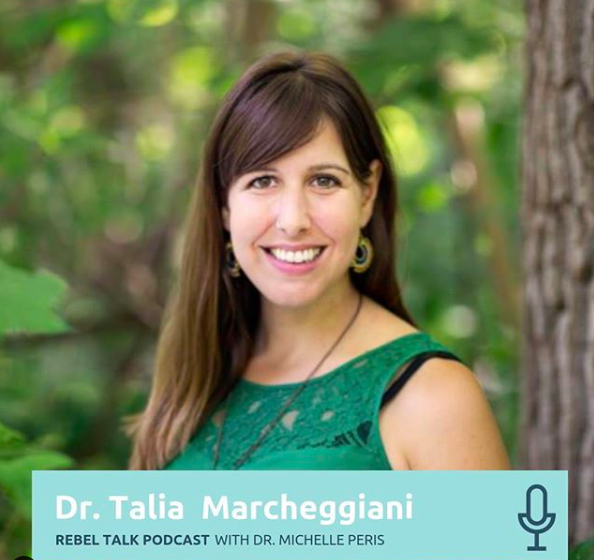
Heal Your Anxiety in a 90 Second Wave Ride
It was a crappy week and I was chatting with a friend online. He said something that triggered me… it just hit some sort of nerve. I backed away from my computer, feeling heavy. I went to the kitchen to pour myself a glass of water and collapsed, elbows on the counter, head in my hands, my body shaking and wracking with deep, guttural sobs.
A few seconds later, I’m not sure how long exactly, I stood up. Tears and snot streaming down my face, I wiped them off with a tissue. I felt lighter, clearer. I was still heavy and sad, but there was a part of me that had opened. I went back to my computer and relayed some of this to my friend, “what you said triggered me, but it’s ok, it just hit a personal nerve. I’m ok now though, I know you didn’t mean any harm”. I typed to him.
Joan Rosenberg, PhD in her book 90 Seconds to a Life You Love, would have said that, in that moment, I had been open to feeling the moment-to-moment experience of my emotions and bodily sensations. I felt the waves of emotions run through my body, and let them flow for a total of up to 90 seconds. And, in so welcoming that experience and allowing it to happen rather than blocking it, fighting it, projecting it (onto my friend or others), I was able to release it and let it go.
For many of us, avoidance is our number one strategy when it comes to our emotions. We don’t like to feel uncomfortable. We don’t like unpleasant sensations, thoughts and feelings and, most of all, we don’t like feeling out of control. Emotions can be painful. In order to avoid these unpleasant experiences, we distract ourselves. We try to numb our bodies and minds to prevent these waves of emotion and bodily sensation from welling up inside of us. We cut ourselves off.
The problem, however is that we can’t just cut off one half of our emotional experience. When we cut off from the negative emotions, we dampen the positive ones as well.
This can result in something that Dr. Rosenberg titles, “soulful depression”, the result of being disconnected from your own personal experience, which includes your thoughts, emotions and body sensations.
Soulful depression is characterized by an internal numbness, or a feeling of emptiness. Over time it can transform into isolation, alienation and hopelessness–perhaps true depression.
Anxiety in many ways is a result of cutting ourselves off from emotional experience as well. It is a coping mechanism: a way that we distract ourselves from the unpleasant emotions we try to disconnect from.
When we worry or feel anxious our experience is often very mental. We might articulate that we are worried about a specific outcome. However, it’s not so much the outcome we are worried about but a fear and desire to avoid the unpleasant emotions that might result from the undesired outcome–the thing we are worrying about. In a sense, anxiety is a way that we distract from the experience of our emotions, and transmute them into more superficial thoughts or worries.
When you are feeling anxious, what are you really feeling?
Dr. Rosenberg writes that there are eight unpleasant feelings:
- sadness
- shame
- helplessness
- anger
- embarrassment
- disappointment
- frustration
- vulnerability
Often when we are feeling anxious we are actually feeling vulnerable, which is an awareness that we can get hurt (and often requires a willingness to put ourselves out there, despite this very real possibility).
When we are able to stay open to, identify and allow these emotions to come through us, Dr. Rosenberg assures us that we will be able to develop confidence, resilience, and a feeling of emotional strength. We will be more likely to speak to our truth, combat procrastination, and bypass negative self-talk.
She writes, “Your sense of feeling capable in the world is directly tied to your ability to experience and move through the eight difficult feelings”.
Like surfing a big wave, when we ride the waves of the eight difficult emotions we realize that we can handle anything, as the rivers of life are more able to flow through us and we feel more present to our experience: both negative and positive.
One of the important skills involved in “riding the waves” of difficult feelings is to learn to tolerate the body sensations that they produce. For many people, these sensations will feel very intense–especially if you haven’t practice turning towards them, but the important thing to remember is that they will eventually subside, in the majority of cases in under 90 seconds.
Therefore, the key is to stay open to the flow of the energy from these emotions and body sensations, breathe through them and watch them crescendo and dissipate.
This idea reminds me of the poem by Rumi, The Guest House:
This being human is a guest house.
Every morning a new arrival.
A joy, a depression, a meanness,
some momentary awareness comes
as an unexpected visitor.
Welcome and entertain them all!
Even if they’re a crowd of sorrows,
who violently sweep your house
empty of its furniture,
still, treat each guest honorably.
He may be clearing you out
for some new delight.
The dark thought, the shame, the malice,
meet them at the door laughing,
and invite them in.
Be grateful for whoever comes,
because each has been sent
as a guide from beyond.
One of the reasons I was so drawn to Dr. Rosenberg’s book is this idea of the emotional waves lasting no more than 90 seconds. We are so daunted by these waves because they require our surrender. It is very difficult however, if you suffer from anxiety to let go of control. To gives these emotional waves a timeframe can help us stick it out. 90 seconds is the length of a short song! We can tolerate almost anything for 90 seconds. I found this knowledge provided me with a sense of freedom.
The 90 seconds thing comes from Dr. Jill Bolt Taylor who wrote the famous book My Stroke of Insight (watch her amazing Ted Talk by the same name). When an emotion is triggered, she states, chemicals from the brain are released into the bloodstream and surge through the body, causing body sensations.
Much like a wave washing through us, the initial sensation is a rush of the chemicals that flood our tissues, followed by a flush as they leave. The rush can occur as blushing, heat, heaviness, tingling, is over within 90 seconds after which the chemicals have completely been flushed out of the bloodstream.
Dr. Rosenberg created a method she calls the “Rosenberg Reset”, which involves three steps:
- Stay aware of your moment-to-moment experience. Fully feel your feelings, thoughts, bodily sensations. Choose to be aware of and not avoid your experience.
- Experience and move through the eight difficult feelings when they occur. These are: sadness, shame, helplessness, anger, embarrassment, disappointment, frustration, vulnerability.
- Ride one or more 90 second waves of bodily sensations that these emotions produce.
Many therapeutic techniques such as mindfulness, Dialectical Behaviour Therapy, somatic therapy, and so on utilize these principles. When we expand our window of tolerance and remain open to our physical and emotional experience we allow energy to move through us more gracefully. We move through our stuckness.
Oftentimes though, we can get stuck underwater, or hung up on the crest of a wave. Rumination and high levels of cortisol, our stress hormone can prolong the waves of unpleasant emotion. We may be more susceptible to this if we have a narrow window of tolerance due to trauma.
However, many of us can get stuck in the mind, and when we ruminate on an emotionally triggering memory over and over again, perhaps in an effort to solve it or to make sense of it, we continue to activate the chemicals in our body that produce the emotional sensation.
Therefore, it’s the mind that can keep us stuck, not the emotions themselves. Harsh self-criticism can also cause feelings to linger.
I have found that stories and memories, grief, terror and rage can become stuck in our bodies. Books like The Body Keeps the Score speak to this–when we block the waves, or when the waves are too big we can build up walls around them. We compartmentalize them, we shut them away and these little 90 second waves start to build up, creating energetic and emotional blockages.
In Vipassana they were referred to as sankharas, heaps of clinging from mental activity and formations that eventually solidify and get lodged in the physical body, but can be transformed and healed.
Perhaps this is why a lot of trauma work involves large emotional purges. Breathwork, plant medicines such as Ayahuasca, and other energetic healing modalities often encourage a type of purging to clear this “sludge” that tends to accumulate in our bodies.
My friend was commenting on the idea that her daughter, about two years old, rarely gets sick. “She’ll have random vomiting spells,” my friend remarked, “and then, when she’s finished, she recovers and plays again”.
“It reminds me of a mini Ayahuasca ceremony”, I remarked, jokingly, “maybe babies are always in some sort of Ayahuasca ceremony.”
This ability to cry, to purge, to excrete from the body is likely key to emotional healing. I was listening to a guest on the Aubrey Marcus podcast, Blu, describe this: when a story gets stuck in a person it often requires love and a permission to move it, so that it may be purged and released.
Fevers, food poisoning, deep fitful spells of sobbing may all be important for clearing up the backlog of old emotional baggage and sludge so that we can free up our bodies to ride these 90 second emotional waves in our moment-to-moment experience.
Grief is one of these primary sources of sludge in my opinion. Perhaps because we live in a culture that doesn’t quite know how to handle grief–that time-stamps it, limits it, compartmentalizes it, commercializes it, and medicates it–many of us suffer from an accumulation of suppressed grief sankharas that has become lodged in our bodies.
Frances Weller puts it this way,
“Depression isn’t depression, it’s oppression–the accumulated weight of decades of untouched losses that have turned into sediment, an oppressive weight on the soul. Processing loss is how the majority of therapies work, by touching sorrow upon sorry that was never honoured or given it’s rightful attention.”
Like a suppressed bowel movement, feelings can be covered up, distracted from. However, when we start to turn our attention to them we might find ourselves running to the nearest restroom. Perhaps in these moments it’s important to get in touch with someone to work with, a shaman of sorts, or a spiritual doula, someone who can help you process these large surges of energy that your body is asking you to purge.
However, it is possible to set our dial to physiological neutral to, with courage turn towards our experience, our emotions and body sensations. And to know that we can surf them, and even if we wipe out from time to time, we might end up coming out the other side, kicking out, as Rumi says, “laughing”.
The only way out is through.
As Jon Kabat Zinn says, “you can’t stop the waves, but you can learn to surf”.

